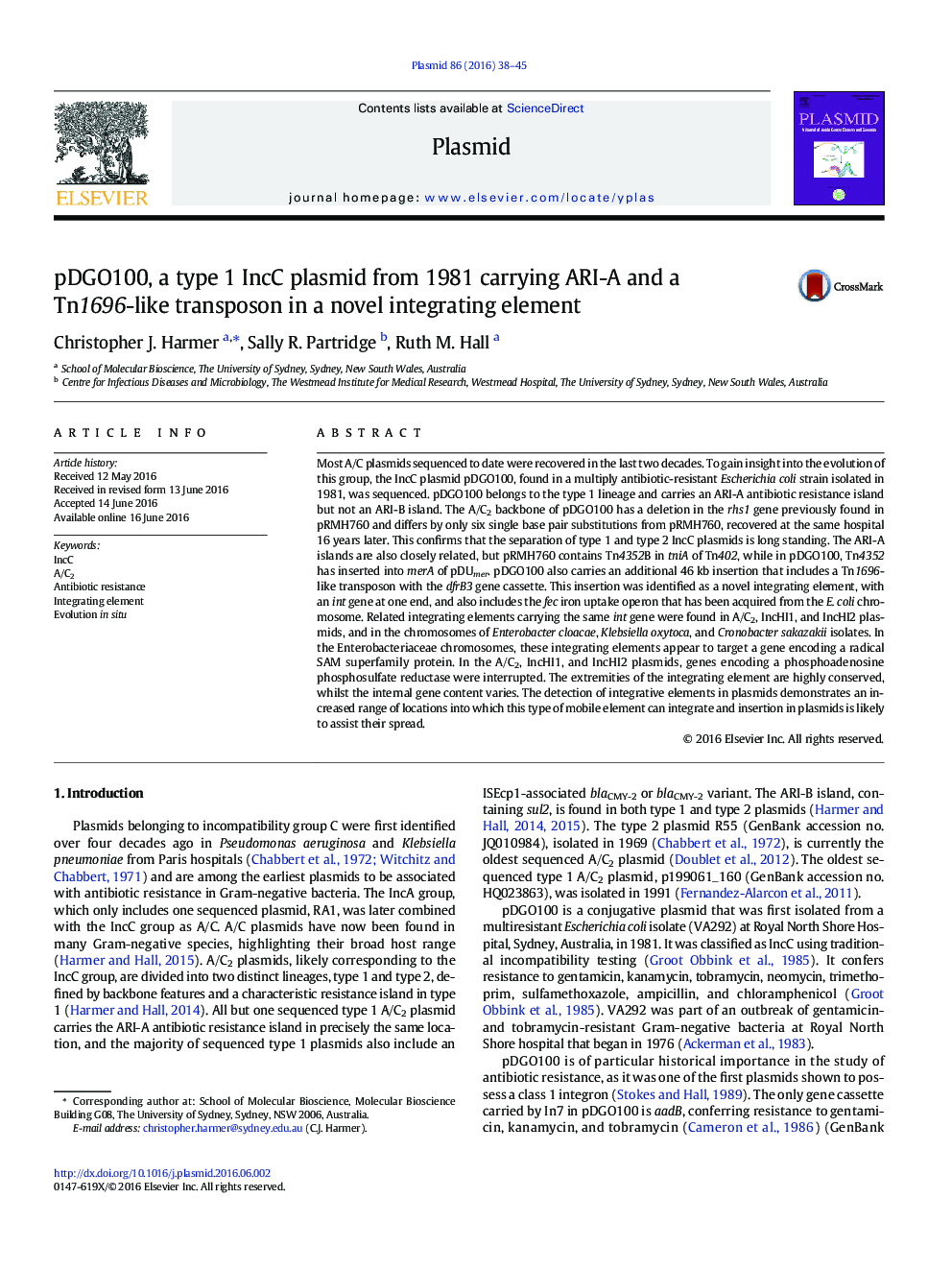| Article ID | Journal | Published Year | Pages | File Type |
|---|---|---|---|---|
| 2824033 | Plasmid | 2016 | 8 Pages |
•A 217,306 bp IncC plasmid, pDGO100, was isolated from an Escherichia coli strain isolated in 1981.•The backbone of pDGO100 is closely related to another plasmid, pRMH760, recovered from the same hospital 16 years later.•A 45.5 kb ARI-A island includes six antibiotic resistance genes: aadB, sul1, dfrA10, blaTEM, catA1, and aphA1a.•A second 46 kb insertion, identified as an integrating element, includes a Tn1696-like transposon.•Related integrating elements were found in other plasmid and in the chromosomes of Enterobacteriaceae.
Most A/C plasmids sequenced to date were recovered in the last two decades. To gain insight into the evolution of this group, the IncC plasmid pDGO100, found in a multiply antibiotic-resistant Escherichia coli strain isolated in 1981, was sequenced. pDGO100 belongs to the type 1 lineage and carries an ARI-A antibiotic resistance island but not an ARI-B island. The A/C2 backbone of pDGO100 has a deletion in the rhs1 gene previously found in pRMH760 and differs by only six single base pair substitutions from pRMH760, recovered at the same hospital 16 years later. This confirms that the separation of type 1 and type 2 IncC plasmids is long standing. The ARI-A islands are also closely related, but pRMH760 contains Tn4352B in tniA of Tn402, while in pDGO100, Tn4352 has inserted into merA of pDUmer. pDGO100 also carries an additional 46 kb insertion that includes a Tn1696-like transposon with the dfrB3 gene cassette. This insertion was identified as a novel integrating element, with an int gene at one end, and also includes the fec iron uptake operon that has been acquired from the E. coli chromosome. Related integrating elements carrying the same int gene were found in A/C2, IncHI1, and IncHI2 plasmids, and in the chromosomes of Enterobacter cloacae, Klebsiella oxytoca, and Cronobacter sakazakii isolates. In the Enterobacteriaceae chromosomes, these integrating elements appear to target a gene encoding a radical SAM superfamily protein. In the A/C2, IncHI1, and IncHI2 plasmids, genes encoding a phosphoadenosine phosphosulfate reductase were interrupted. The extremities of the integrating element are highly conserved, whilst the internal gene content varies. The detection of integrative elements in plasmids demonstrates an increased range of locations into which this type of mobile element can integrate and insertion in plasmids is likely to assist their spread.
